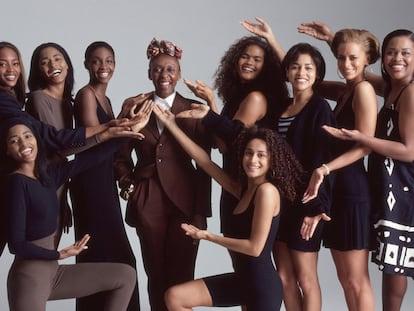Eva Herzigova: ‘How many black sweaters do we need?’
The Czech discusses the pros and cons of the fashion industry and reflects on the continued salience of the 1990 supermodels: ‘We are still relevant because we remind people of better times’

Czech model Eva Herzigova was planning to throw a party to celebrate her 50th birthday, but a few days before sending out the invitations she received a call that upended her plans. “Eva, you have to go to the Oscars in Los Angeles,” her agent told her. “But that weekend is my birthday,” she replied. “It would be nice if you went,” her agent insisted. “I don’t live in Los Angeles, and I don’t go there very often. I have some friends there, but they were all out of town on those dates. So, I spent my birthday alone in Los Angeles. I managed to organize a small dinner, but without my family. It was very strange,” she explains as she prepares for an El País Semanal photo shoot in a studio in Corvetto, Italy, an industrial area in Milan. “Since I haven’t celebrated my 50th birthday yet, I still say I’m 49,″ she continues, smiling the same smile that made her a supermodel in the mid-1990s.
For nearly 35 years, Herzigova has had to change her personal plans to meet her work commitments. At 16 she won a modeling contest in Prague, and left her hometown of Litvínov, near the German border, to try her luck in Paris. She was the prototype of the impossible beauty that brands were looking for at the time: she’s 5′9″ tall, blonde and blue-eyed, with 35-24-35 measurements. In 1992, she became famous by playing a modern Marilyn Monroe in an advertisement for the jeans brand Guess, and in 1994, at the age of 21, she starred in the Wonderbra campaign. In the ad, the model looked down at her wonder-bra-enhanced breasts while reading the message: “Hello boys.” The British press claimed that the billboards caused traffic jams and car accidents. According to a study by the University of Michigan Business School, Wonderbra managed to sell one push-up bra every 15 seconds in the United States between 1994 and 1995.
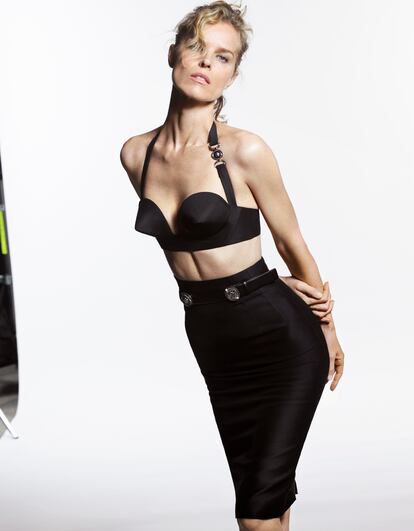
The Wonderbra campaign changed Herzigova’s life and catapulted her into the elite supermodel club of Linda Evangelista, Naomi Campbell, Christy Turlington, Cindy Crawford, Claudia Schiffer and Kate Moss. Since then, she has accomplished everything one can in fashion: she was one of the famous Victoria’s Secret angels, graced the cover of every magazine — including Playboy — and starred in the Sports Illustrated swimsuit edition. In 2011, she was even one of the stars of Girl Panic!, the Duran Duran music video that MTV censored for being “too provocative.” These days, she leads a calmer life in Turin, Italy, with her husband, Italian businessman Gregorio Marsiaj, and their three children. She says she works less and studies each job offer more carefully, but there’s always a photo shoot or fashion show somewhere in the world that forces her out of her comfort zone.
Q. Current fashion seems to be nostalgic for the 1990s. Why do you think that is?
A. The nineties were colorful, cheerful and carefree. When I started, I came from a very restrictive communist country, and I joined an industry with endless possibilities. The 1990s were fun; it was an era of crop tops, visible underwear, baggy pants, Marky Mark posing for Calvin Klein... I understand that fashion wants to go back to that. It may work for young people, but not for me.
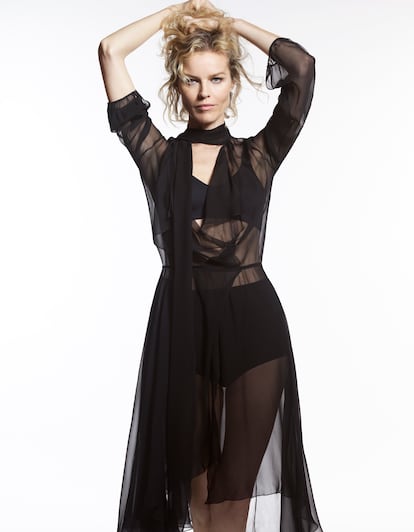
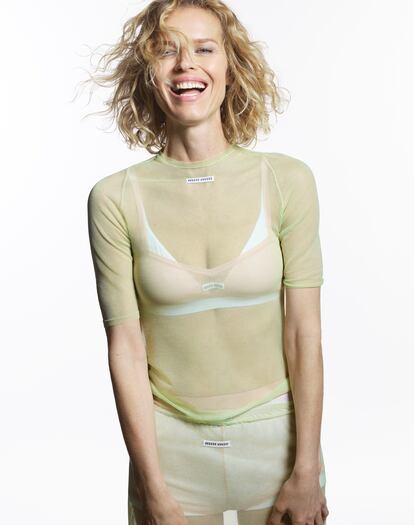
Q. Why are we still fascinated by the supermodels of the 1990s?
A. Young girls connect with influencers, with social media superstars, but I don’t know if older girls do. And fashion brands know who their real clientele is — women who actually spend money. The customers who buy [the clothing] are of a certain age and identify with those of a certain age. We, the models of that generation, have experience; we have lived, and we have a history. The 1990s were so much fun: the economy was booming, the music was amazing, everything was like a dream. Supermodels are a testament to that era. Maybe that’s why we’re still relevant, because we remind people of better, happier times.
Q. They were real stars, like Hollywood actresses.
A. That’s what I like about this job, the acting, the silent film actress part [of it]. Before, we models created characters and told a story with a beginning and an end. Now everything is more boring and flat. There is no more fantasy. There is no magic and I miss it.
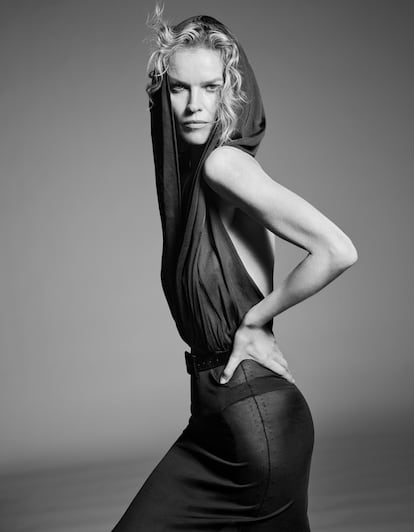
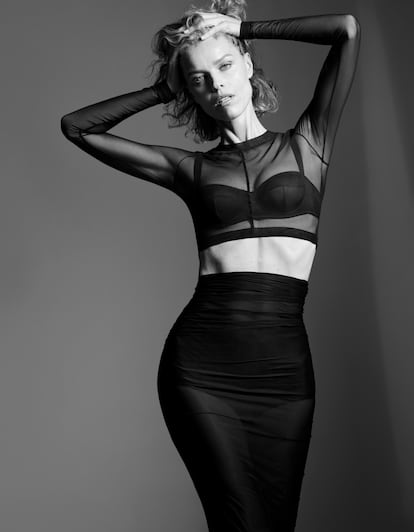
Q. You sound bored. Does the job bore you?
A. Yes, sometimes. That’s why I’m very selective now about the jobs I accept. I need to know what clothes I’m going to wear and which teams I’m going to work with. I don’t want to be a hanger on which clothes are hung to be photographed. I don’t understand that part of fashion today. Now the industry wants models to be like hangers and that bores me.
Q. So, what motivates you to keep working?
A. I don’t have a specific motivation. I’m actually really annoyed with fashion. The pandemic made me reflect on how fashion is not doing a good job of protecting the planet and the environment. I don’t know why brands don’t slow down and go back to doing two collections a year like they used to. Now, they all do a pre-collection, a cruise collection, a capsule collection... That involves moving large production teams and generates an enormous amount of waste. It’s useless. How many black sweaters do we need? The fashion people I know are very conscious about climate change and sustainability, so I don’t understand why the industry continues its destructive dynamic of producing more and more....
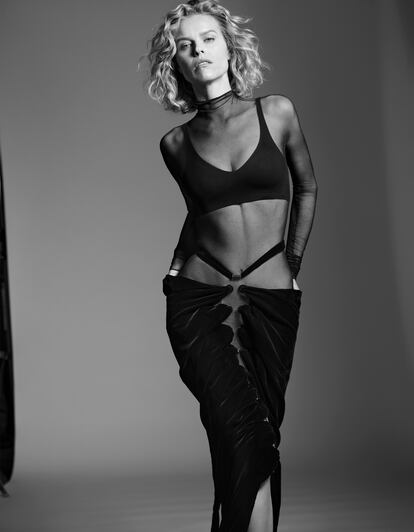
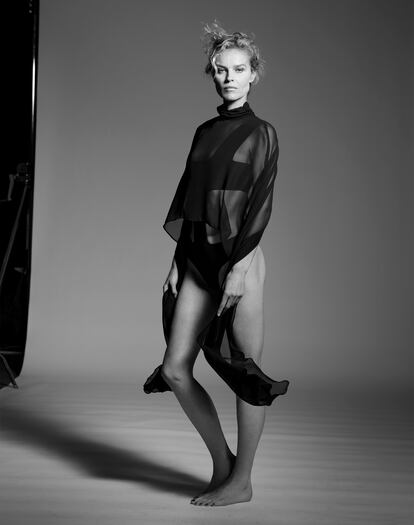
Q. Have you ever felt objectified or been put in an uncomfortable situation?
A. When I started working in fashion, I was very genuine, but I have very strong values and have always known what is right and what is wrong. When I have found myself in uncomfortable situations, my instincts have helped me escape. Laughter has helped me a lot. Laughing in the face of some men has gotten me out of many uncomfortable situations. A well-timed laugh has helped me make fools of older men who were trying to do something. I’ve always been very strong and independent, so I’ve been lucky. But I’m sure a lot of women are paralyzed in these situations and that feeds the predator. It must be horrible to lose control of oneself.
Q. Speaking of control, how do you feel about turning 50?
A. [Long pause]. During the pandemic, everything stopped and that helped me to slow down, settle down in Turin and embrace some peace and quiet. For a long time, I didn’t know who I was because I was always playing a different woman. Since I was very young, my work has been playing different roles in front of a camera or in a fashion show. Now, finally, I really know who I am and what I want in life.
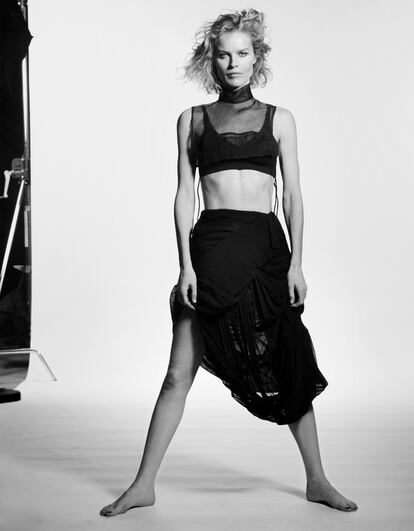
Q. During the pandemic, we all said we were going to come out of it as better people. You seem to have succeeded at that.
A. I think people are more manic than before the pandemic. Everyone is anxious to make up for lost time. I don’t want that for myself. I say no to a lot of jobs because I don’t see a purpose to them. I have a life, a husband and three kids, and I don’t want to waste my time.
Credits:
Sign up for our weekly newsletter to get more English-language news coverage from EL PAÍS USA Edition

